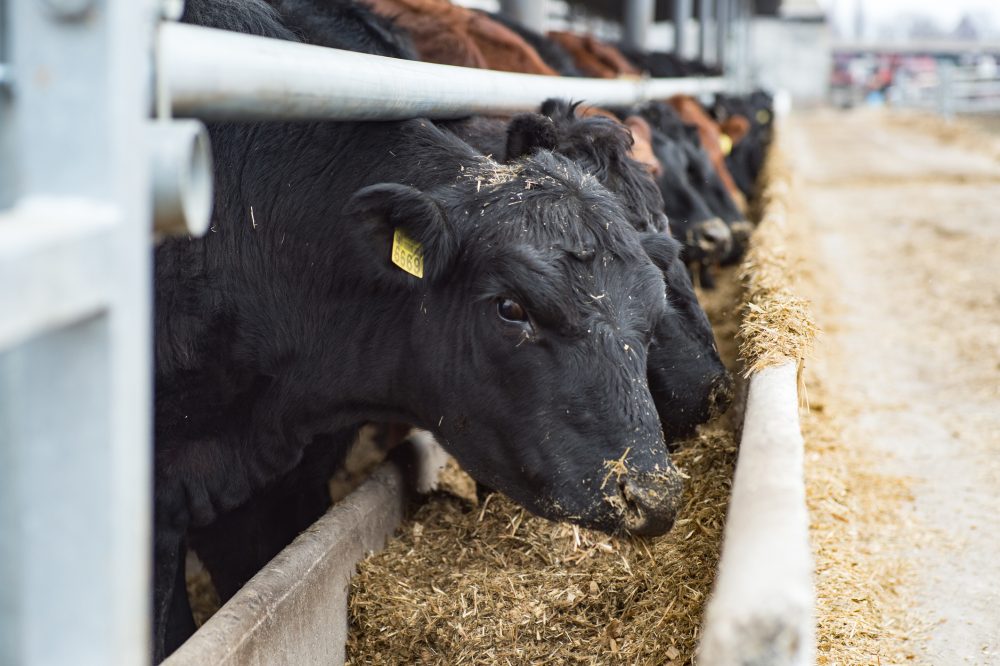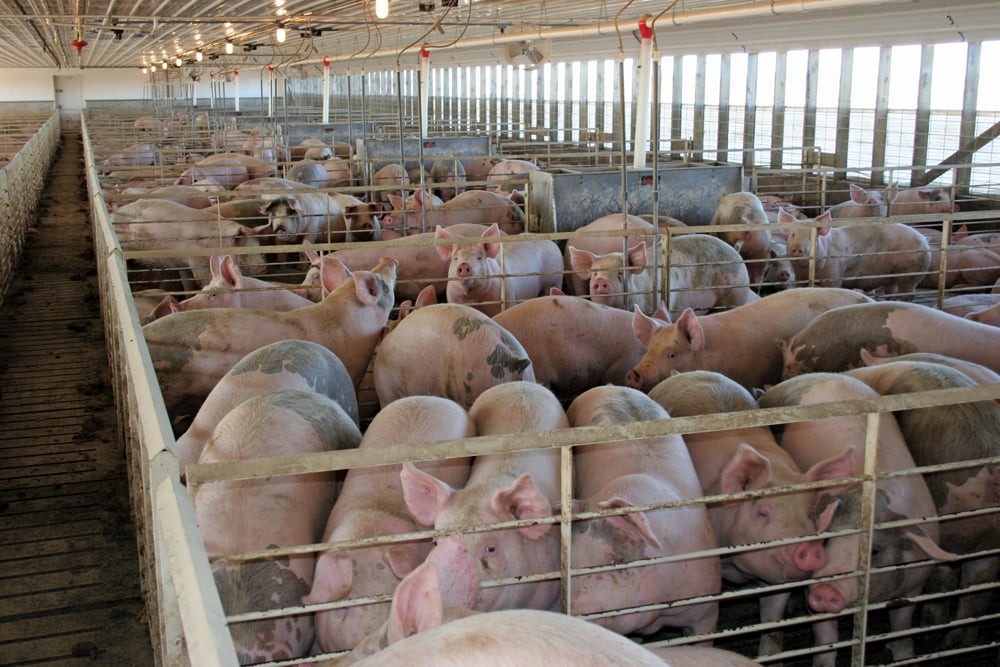Sustainability demands pressure livestock feed industry

Glacier FarmMedia—Farmers and the animal nutrition industry need to understand that feeding livestock today requires thinking about what comes out of an animal as much as what goes in, according to many at the Animal Nutrition Conference of Canada.
Demands around the world to restrict greenhouse gas and nutrient emissions from all forms of livestock mean feed formulators need to ensure that animals are efficiently pulling all they can out of both macro and micro-nutrients to reduce the amount of harmful substances that end up in the air, water and soil.
Read Also


U.S. livestock: Lean hogs hit three-month low on weaker cash prices
Chicago Mercantile Exchange lean hog futures slumped to a February low on Thursday under pressure from solid U.S. production and weaker cash prices, traders said.
“They look at livestock and see pollution,” said Melissa Dumont, executive director of the Animal Nutrition Association of Canada, summing up widely held public and government attitudes toward agriculture.
Those attitudes result in both scrutiny of and demands upon the feed industry that are relentless and sometimes wrongheaded, some researchers and scientists said.
“The pressure on us … is absolutely immense,” said British feed scientist Emily Burton of Nottingham Trent University.
“It’s the assumptions that annoy me most as a nutritionist.”
Within the livestock and feed industries there is much pride over the ever-increasing efficiency of meat production, with per-kilogram greenhouse gas emissions and environmental impact significantly falling over time.
For example, the U.S. hog industry claims it now has an eight per cent smaller environmental impact, uses 75 per cent less land, consumes 25 per cent less water and runs on seven per cent less energy than 50 years ago, despite producing much more meat.
Each healthy pig or steer today now produces more pounds of gain with fewer emissions than ever before, while preserving grasslands and consuming materials that would otherwise be waste.
However, millions of people around the planet believe livestock production is a primary cause of climate change, water pollution and soil degradation.
While some have pushed back against what they consider misperceptions of net livestock emissions, virtually all feed companies and researchers now include “sustainability” as a key metric when considering advances and characteristics they are trying to build into feed sources and practices.
Before the official opening of the main ANCC sessions, a full morning was dedicated to researchers who are focused on boosting livestock sustainability with better feeding.
Getting to “net-zero livestock production” and turning pledges into concrete sustainability results for pig and dairy cattle producers were the lead-off sessions for the symposium, which drew more than 400 attendees.
American and Dutch experts challenged the feed industry to take more seriously micro-nutrient impact, efficiency and waste, which they said is generally ignored.
“Most of us don’t (pay attention to micronutrient impacts),” said Terry Engle of Colorado State University.
There’s great stress on researchers to improve livestock sustainability, but fortunately for the industry, it appears there is a stream of young researchers keen to get into the industry. Dozens of graduate students from across Canada, many from non-Canadian backgrounds, attended the conference.
The student researcher presentations, both in posters and from the stage, were popular with more seasoned researchers, and the conference sprinkled student participation through the event.
One organization making its appearance at the conference was African Youth in Canadian Agriculture, which is a new national organization attempting to connect African students in Canadian high schools and universities to opportunities in agriculture, which most young urban people are unaware of and have no clue of how to access.
An example of how African-origin researchers are finding places in Canada’s feed industry was seen in University of Saskatchewan graduate student and researcher Roseline Ogory, who presented her work in incorporating Ahliflower seed and cake in chicken diets to produce better omega 3 content in eggs.
The notion that there are still radical gains to be made in livestock feeding efficiency ran through the conference. Micronutrients are not the only element of livestock feeding that is likely being supplied inefficiently and possibly counterproductively. University of Saskatchewan swine nutrition scientist Dan Columbus highlighted the relative lack of study on sow nutritional needs and the crude manner in which sow diets are supplied, mostly ignoring the cyclical needs of the animal.
Engle, an expert in copper, acknowledged his favourite element befuddles him, despite decades of study.
“I love copper, but it confuses me,” said Engle.
Researchers feel much pressure to feed animals more sustainably, but many also feel optimism that feeding sustainability and efficiency have major gains waiting to be discovered.
That tension between demands for sustainability and optimism about sustainability dominated the conference.
Source: Farmtario.com

